The Events of 9/1 (A Katrina Essay)
MDW / TCP
|
“CONTRAFLOW“
|
“12TH PLACE“
|
Responders
|
Part 1/3: The Katrina Responders
The Contraflow Project (TCP) would like to acknowledge all the responders, survivors, volunteers and the public information officers, supporters, followers and our fiscal sponsor Contraflow Inc. for helping to make our study of the Katrina response and post-Katrina New Orleans a success. Thank you!
There was Lt. General William Caldwell, the then Commanding Officer of the 82nd Air-borne, telling me about flight to the Gulf Coast after receiving zero notice to deploy; Rear Admiral Nora Tyson, then CO of the USS Bataan, telling me how helicopters from her flight deck conducted search and rescue missions throughout New Orleans; Lt. Colonel Gary Cooke, of the 439th Airlift Wing, telling me how he retasked his C-5 transport plane to help expedite the evacuation of Louis Armstrong Airport; Dave Haddad, FAA Houston Center ATC Manager, telling me what it was like running the Armstrong Airport Control Tower on the day it became the most congested airspace in the world; Richard Brown, DMAT CA-6 team member, telling me how he kept pleading to the National Guard to resume medevac operation at the Superdome Heliport “HLZ Eagle Base”; Lt. (CWO4) Dave Lewald, then Commanding Officer of the CGC Clamp, telling me how the Coast Guard moved 6,000 evacuees to safety through the Algiers Point Ferry Terminal; and Dr. Ri Venuti, DMAT CA-4 team member, telling me how she cared for patients in the “Black Tent” (expectant patients) at Armstrong Airport with compassion and dignity.
There was also Mayor Mitch Landrieu, then Louisiana Lt. Governor, telling me how he led an 8-bus convoy of Katrina evacuees who had been turned away in Baton Rouge, from West Baton Rouge Parish to Lafayette; Dr. Scott Delacroix, then Urologist at Charity Hospital, telling me how he came into New Orleans to help his stranded Charity Hospital colleagues instead he wound up leading the medical response at the I-10 & Causeway Blvd. collection point; Dr. Greg Henderson, then at Ochsner Hospital (I believe), telling me how he and a NOPD officer walked through crowds of the Morial Convention Center to provide aid and comfort; Sheriff Newell Normand, then Jefferson Parish Sheriff’s Office Chief Deputy, telling me how he pressured FEMA to come up with a more humane plan for moving evacuees from collection points in New Orleans to Armstrong Airport and beyond; Devika Koppikar, then Maryland U.S. Rep. Congressman Elijah Cummings’ press secretary, telling me how her boss took the lead and planned a Congressional Black Caucus press conference; Joe Kolshak and Mike Quiello, then both Delta Airlines Executives and pilots, telling me how thier boss CEO Gerald Grinstein asked him how many evacuees could they bring back with them to Atlanta; Fr. Dennis Hayes, then pastor at St. Louise De Marillac, telling me how he wrote a letter by candle light in the Calliope Projects thanking his host for food, shelter and dry clothes; Kim Cardrice Johnson, then a resident of New Orleans East who ended up at the Morial Convention Center with her family, telling me that she believed that Friday evening 9.2.05 was the night she was going to die at the hands of military snipers; Rick Mathieu, the leader of the Soul Patrol, telling me how he saluted Air Force One as it flew over his city, realizing that the country now knew they were there in the water, and that help would soon come for all those he had rescued and deposited on various interstate bridges. There were many, many more…
Towards the end of most of my interviews I would ask the interviewee, “what are your last words?” The most memorable and encouraging response that always comes to mind was from Rear Admiral Nora Tyson, who was onshore in Bangkok Thailand when we spoke by phone. She said,
“Mr. Woods, I’m not really sure what you are doing, but I think I like it!“
About two years ago, I learned about an American Red Cross of New Orleans (ARCNO) benefit called “Heroes of the Storm,” which was to coincide with the five year anniversary of Hurricane Katrina. With less than a week until the event, I immediately contacted the ARCNO to persuade them to add a group of men who called themselves the Soul Patrol (Rick Mathieu, Emanuel Mathieu, Earl Barthe and Jadell Beard) to their list of those being honored. Thankfully, the ARCNO obliged my request. This turned out to be a great move because the Soul Patrol turned out to be the life of the ball. The executive director Kay Wilkins posed with them, Mayor Mitch Landrieu praised them and retired Lt. General Russel Honore shared Katrina war stories with them.
I first met the Soul Patrol on 9.12.05, in my hometown. They, minus Manny who was sent to Milwaukee a few days earlier, had been placed on one of the last two post-Katrina evacuation flights out of Louis Armstrong Airport to a destination unknown to them until twenty minutes before landing. I approached them at the Civic Auditorium and simply said “Welcome to Omaha.” I gave each one of them a copy of a book I wrote titled AFROMATION, and a t-shirt with a fleur di lis on the front and the words “Operation Overground Railroad, Destination Unknown” on the back. Later on that day they asked me if I would help them document their ten days on the water down in the New Orleans 7th Ward. Whether I realized it or not, that request turned out to be the origin of The Contraflow Project.
Around the time of the first anniversary, Rick Mathieu and I came to an understanding that I keep going with the research, expanding beyond the Treme and the 7th Ward communities. This led me to local, regional, in-state, out-state, federal and international Katrina responders. The plan evolved to telling the whole story of Katrina through the eyes of the responders.
It warmed my heart to see the Soul Patrol finally being honored by city leaders, and to see how good it made them feel. Even so, I still needed a conclusion to the research, which was still nowhere in sight. I needed an “Enough!” moment. Because of how large this one-person research project became, and because I was still chasing that final pieces of information to complete the jig saw puzzle, I was nowhere near providing an attainable publishing date for my book on Katrina; working title “CONTRAFLOW.”
Moving forward I began to review my list of responders who I had not yet interviewed. I communicated with General Honore during the Spring of ’11. He strongly encouraged me to read his book SURVIVAL. I also made one last Google search of a Manatee County Sheriff’s Office (MCSO) homicide detective named Bill Waldron and found an updated article on him and his experiences at the Morial Convention Center during Katrina. He was in New Orleans as a witness for the prosecution and got stuck in the city like thousands of other visitors. He eventually ended up spending 48 hours-plus at the Morial Convention Center. When I first reached out to him in ’06, he turned down my request for an interview. This time he was retired from MCSO and was eager to talk about his Katrina experiences. Feeling a sense of momentum I kept going through my list and came across the name of former Jefferson Parish Sheriff Harry Lee, who had passed away in ’07. I was really behind. But not to be deterred, I contacted his daughter Jefferson Parish Councilwoman Cynthia Lee-Sheng. I shared my vision for the book “CONTRAFLOW” with her and asked for support to include her father’s Katrina experiences. I also asked her to consider making a call to the Jefferson Parish Sheriff’s Office (JPSO) to formally introduce me. To my knowledge, JPSO had never willingly granted an on the record interview on the Katrina response to anyone…
It’s now September 2011, and another Katrina anniversary has come and gone without publishing. On the good side, I received a lot of encouragement that month. I received a call from my mother on 9.11.11, an avid 60 Minutes viewer, alerting me to an episode about SUNY Stony Brook Professor Dr. Benjamin Luft’s (World Trade center) WTC Oral History Project that was airing that evening on the ten year anniversary of 9/11. Exchange 9/11 responders with Katrina responders and what you have is very similar to what I had been doing for six years — an oral history project.
A week or so later I made a personal update call to Katrina responder Dr. Ri Venuti of DMAT (Disaster Medical Assistance Team) CA-4, who was deployed to Louis Armstrong Airport on 8.31.05 to set up a triage system. I explained the current publishing plans to Dr. Venuti, a clinical psychologist professional, who I first met during a visit to San Diego in December ’06, when I had conducted a series of interviews with various CA-4 members. Their team commander Dr. Jake Jacoby picked me up at the airport, took me to dinner and brought me to their operation center where over a dozen team members were waiting. It was a surreal event hearing the responders speak freely about their experiences in New Orleans. My ’06 Katrina responders tour continued two days later in Menlo Park, CA, where I interviewed DMAT CA-6 members. They had been deployed to the Superdome (New Orleans Arena) on 8.31.05. It has been personal visits like the ones in December ’06 that motivated me to document the Katrina responders and commit to dedicating my forthcoming book to them.
I called Bill Waldron to give him a personal update as well. All of our previous communications were interviews and follow-up questions. On this September 2011 afternoon, I shared my publishing plans and he in-turn shared how his Katrina experiences in New Orleans have affected his life. In his next breath, he tells me about plans to announce his intentions to run for the office of Manatee County (Florida) Sheriff. The next thing I know, I’m telling with him how to get his Internet presence up and running, and discussing strategies. It was a perfect diversion to get my mind off of TCP for a while.
The next day or so, I contacted JPSO spokesman Col. John Fortunato. To my knowledge, JPSO had never willingly granted an on the record interview on the Katrina response to anyone. In my case, they agreed to see me, the key phrase being “see me.” For over three years, I had conducted interviews solely through electronic means. The Colonel and I agreed to meet August ’11. As fate would have it, the effects of Hurricane Irene caused Amtrak to shut down operations along the entire Crescent Line (NYC – New Orleans) on the day I was to travel to New Orleans. I finally sat down with Col. Fortunato at JPSO headquarters in early October ’11. He was at former Sheriff Lee side 90% of the time during the first week of Katrina. It was a great interview. I now had Sheriff Lee and Col. Fortunato’s storylines. This had me thinking “Mission Accomplished!” As I packed up to leave, the Colonel tells me that his current boss JPSO Sheriff Newell Normand wants to talk with me as well. In six plus years of research, reviewing tens of thousands of Katrina-related web pages, I had not seen Sheriff Normand’s name come up anywhere. I knew he was the second in command back in ’05, but that was all I knew.
I returned to the JPSO headquarters a few days later with Rick Mathieu. I looked at the pending interview as being symbolic, with Rick being my first major Katrina responder storyline interview and Sheriff Normand being the final. I brought a digital recorder and video camera. Sheriff Normand came out of a side door to his office, greeted and escorted us into his office where the Colonel was waiting. I presented them both with an autographed copy of my book AFROMATION, just as I did six year earlier when I first met Rick and the Soul Patrol, and others returning home to Greater New Orleans from exile. I then asked the Sheriff if it was alright to document him electronically and if he minded a video camera. For some reason I felt that he would not want a camera in his face. But to my surprise he and the Colonel make a comment to the effect that,
“why wouldn’t you want to use your video camera on us?“
So the mood was good, everyone was relaxed and comfortable; then Sheriff Normand begins to share his Katrina experiences. About fifteen minutes into the interview I caught myself gazing out his office window, which had a view of the Crescent City Connection Bridge and the New Orleans Central Business District skyline, and saying to myself “oh my God!” The more I heard the Sheriff share, the more I realized that there would have been no way I could have published the Katrina book to end all Katrina books without the inclusion of JPSO. I realized I had to learn all I had discovered about the Katrina response in order to comprehend what I was documenting at that very moment. Some sixty minutes or so later Sheriff Normand is still going strong and I was closing in on the “big picture.” One thing I learned early on in my research was to never interrupt someone when they were reliving those days of Katrina. I always deferred any questions to a follow-up email or interview.
To summarize, Sheriff Lee took the Westbank and then Chief Deputy Sheriff Normand took the Eastbank. Once the needs of their own Jefferson Parish citizens were satisfied a day and a half later, they turned 80% of their energies towards aiding Orleans, St. Bernard and Plaquemines Parishes; with most of their resources focused on New Orleans. Sheriff Lee told his commanders to take care of NOPD Chief Eddie Compass, to get him whatever he needed. Finally, wait until you read in my forthcoming book what then Chief Deputy Normand did at Louis Armstrong Airport on 9/1. Let’s just say if Lt. General Honore was Mayor Nagin’s “John Wayne dude,” then Normand was Sheriff Lee’s “Charleston Heston dude.” What a great untold storyline.
The Trend
|
The Wall
|
The Channel
|
Blog, Blog
|
Part 2/3: The Sequence of Events
Next on my list was to read former New Orleans Mayor C. Ray Nagin’s book Katrina Secrets. Mayor Nagin ran into Rick at a 7th Ward eatery last summer and gave him an autographed copy. It, like Lt. General Honore’s book, was a wealth of information. When it was first released the local media focused on the following:
“Nagin writes that he and now-retired Lt. Gen. Russel Honore planned the Sept. 1, 2005, exodus, as a “freedom march” designed to culminate in a protest at the doorstep of then-Gov. Kathleen Blanco, some 80 miles away in Baton Rouge.“
When the press contacted Lt. General Honore about the “freedom march” plan, he responded with:
“…the only “march” he helped plan was an effort to move tens of thousands of evacuees from the Superdome, which was surrounded by nearly waist-deep water, through the adjacent Hyatt Regency New Orleans to the corner of Poydras Street and Loyola Avenue, where they eventually would board buses to leave the city.“
Another thing I found perplexing was the knowledge that evacuees were streaming across the Crescent City Connection Bridge most of the previous day. Hmm, maybe I’m not finished. I wanted to contact Nagin directly to confirm whether he knew about the bridge foot traffic the day before, and if his “freedom march” was the reason Coach Blanco came to Jefferson Parish. Gretna Mayor Ronnie Harris, Gretna Police Chief Arthur Lawson and Sheriff Normand had confirmed to me the Coach Blanco meetings on 9/1. But the rationale behind what lead to the meetings has eluded me for over five years. At the time, this was the only significant Katrina response detail that I knew I was missing. I really wanted to contact Nagin directly. I’ve been reading the Times-Picayune (Nola.com) religiously since ’05. So I knew it was no secret in New Orleans that Mayor Nagin hasn’t been a media darling since his infamous ’06 Martin Luther King, Jr. observance “Chocolate City” speech. What I’m saying is, while news reports have been helpful, my research methodology has placed a high priority on talking directly with the source.
I do consider most non-ghost written memoirs to be a direct source. With this in mind I started reading Nagin’s Katrina Secrets and found an epiphany moment on page 160, where he wrote:
“I had earlier told Chief Compass that I was extremely concerned about how we were going to get through the night. I felt we needed to get creative. I suggested that he take every police vehicle he could find and instruct officers to drive throughout the dry areas in the city with bright blue strobe lights piercing the darkness. The strategy was to give the appearance that there was a strong police presence everywhere.“
Later on page 169, Nagin is in his Hyatt Regency Hotel suite on a high floor. He wrote:
“…I could see the flashing blue lights from the tops of police cars dancing through the streets like blinking Christmas lights. I watched them dance until I fell asleep around three or four a.m.”
Bells immediately went off in my head remembering my interview sessions with Bill Waldron, who spoke of an incident around three or four a.m. Thursday morning at the convention center involving NOPD officers showing up and firing over Katrina survivors’ heads causing a stampede. Thinking back to when Bill first told me about this event, I immediately thought of the Danny Brumfield killing. But, the dates did not match. All “published reports” to this date shows Mr. Brumfield being killed by an NOPD officer sometime between early Friday and Saturday morning, depending on the source. So, I did not push Bill any further on what else he recalled about that incident. However, I still had questions for Mayor Nagin, most of them pertaining to any communications he may have had with Gov. Blanco’s office about the “freedom march.” I was still trying to get to the bottom of what led Coach Blanco to visit Jefferson Parish in the wee hours of the morning, instead of communicating electronically from Baton Rouge. Those who were present at the JPSO HQ and Gretna Police HQ meetings, that I interviewed, all told me that the plan to blockade the Crescent City Connection Bridge came as a direct result of his visit. During our respective interviews, they all said Coach Blanco guaranteed that an armada of buses was coming that day to begin evacuating the convention center.
Tulane University Professor Lance Hill, the executive director of the Southern Institute of Education and Research, shared a theory that the Crescent City Connection Bridge was blockaded to protect the St. Bernard Parish evacuees who were being ferried up the Mississippi River to Algiers Point Ferry Terminal before being transported by buses and trucks out of the metro area. I could never confirm this, although Gov. Blanco aide Sam Jones was present at the meetings. I know from reading through “Blanco’s Katrina Documents” that Jones had been in direct contact from the state capitol to then State Sen. Walter Boasso, who was in the flooded St. Bernard Parish organizing rescue and relief efforts for his constituents.
I think then Lt. Governor Mitch Landrieu, in a December ’07 interview with me on his Katrina experiences, said it best:
“Everybody was in the same damn boat.”
I do realize though that race is always an issue in Southeast Louisiana in one way or another. I have tried to look beyond the racial implications of the Katrina response. Yet, I could see how it may have been hard for many to understand why the mostly white St. Bernard Parish evacuees were moving out of Greater New Orleans while the mostly black evacuees at the Superdome and convention center were still waiting in misery. I could also see why in many people’s minds the State of Louisiana appeared to have been focused mostly on St. Bernard Parish victims and left the New Orleans victims for the federal government response. But after reading Chapter 6 of Nagin’s book, I now have my own theory of how things went from bad Wednesday (Day 3) evening to worse Thursday (Day 4) morning, which I call “The(ory) Events of 9/1.”
The following sequence of events happened between 2 a.m. and 12 noon on 9/1:
- Coach Blanco arrives on the Westbank in Harvey to meet with Sheriff Lee and his command staff. Gretna Mayor Harris learns of this meeting and requests that Coach Blanco pay them a visit as well. One of the primary topics of discussion was buses to help evacuate New Orleans.
- A Louisiana National Guardsman (LANG) is shot in the Superdome around the same time Major General Mark Graham, then 5th Army Deputy Commanding Officer, arrived to inspect the Hyatt Hotel pedestrian evacuation route to the anticipated buses on Loyola Ave. Nagin and others hear about the shooting and believe it to be an evacuee uprising and run up the Hyatt Regency stairs to their rooms. FEMA’s Disaster Medical Assistance Team personnel (DMAT) triaged the MP and had him airlifted to a hospital in Baton Rouge. Major General Graham completed his mission and flew back to the EOC in Baton Rouge.
- Nagin’s order to get police cars on the streets with blue lights flashing is in full effect. Bill Waldron is standing outside the convention center as the blue lights showed up. At first it was a sense of comfort for him. Then he sees an officer fire over the Katrina survivors’ heads causing a stampede.
- After the LANG apprehended the young man who got into the altercation with the MP, the Superdome crowd began chanting. Not long after that a LANG general tells FEMA officials and the DMAT teams that they could no longer guarantee their safety. FEMA and DMAT saw the crowds getting more agitated by the minute and came up with a plan to escape through the New Orleans Arena into the back of their high water trucks.
- News about the “lawless” conditions at the convention center reaches Chief Compass, which is passed on to Nagin, who instructs his communications director to send out a dire text message to a staffer in Houston to distribute to the media, which according to Nagin read: “This is a desperate SOS. Right now we are out of resources at the Convention Center and don’t anticipate enough buses. We need buses. Currently the Convention Center is unsanitary and unsafe, and we’re running out of supplies.“
- NOPD passes on their concerns about the safety and security conditions at the convention center to the media.
- The crowds at the Superdome are getting madder and madder as the temperatures were getting hotter and hotter. A full scale riot seemed eminent. Then all of a sudden, it started raining. Like a gift from God from many points of view, the crowd was able to calm down and enjoy the first shower for most in four days. A riot was averted.
- The Crescent City Connection Bridge blockade begins, halting the steady flow of foot traffic into the Westbank.
- The FEMA and DMAT teams make it back to Baton Rouge signifying to many that FEMA has pulled out of the city limits of New Orleans. The talk now was about turning it all over to the military.
- Some of the buses FEMA had targeted for the Superdome were sent to pick up evacuees on I-10 and I-610 in the 7th Ward. But most of the buses were either re-tasked to transport arriving military reinforcements, or the drivers simply refused to go into New Orleans. JPSO and Gretna Police still believe Coach Blanco assurance that buses were coming to evacuate the convention center.
- The Nagin staffer in Houston gets the SOS message out and the media descends on the convention center. Reporters from newspapers like the San Antonio News-Express, Washington Post, as well as TV news crews. MSNBC cameraman Tony Zumbado gives a passionate heart-felt live report from the convention center that touched the world.
The scenes from the convention center on 9/1 were heart breaking. I remember thinking to myself how could it be safe enough for throngs of reporters, but not for the police or National Guard to get in there and help their own people. There still had to be something big that I was missing…
Six Degrees
|
TCP Albums
|
TCP
|
TCP Ltrs
|
Part 3/3: The Convention Center Epiphany
Four months ago I emailed Mayor Nagin in the hopes he would grant me an interview. Two months ago, I decided to go back through Bill Waldron’s Katrina experiences one more time. On May 9th at 9:18 a.m. EDT, Bill and I were going back and forth in a Gmail thread when I noticed a jaw-dropping revelation in one paragraph of a message he had just sent me which read:
“…Later after being rescued by Major Shoop and his volunteers, Major Shoop told me that when he asked for volunteers to come help get me out of the Convention Center, NOPD supervisors told him that it was too dangerous because of the violence and people shooting at Police. Major Shoop told me that he had not heard of any shootings himself and that his group had driven past the Convention Center on a daily basis since their arrival in New Orleans and hadn’t experienced any problems or threats. I had a conversation with Major Shoop on the drive to the collection Point transporting the medical patients. I told Major Shoop that I had not seen any violence except by the Police earlier that morning during the hours of darkness when NOPD Units fired a shotgun in the air over the people gathered out front of the Convention Center when one man tried stopping an NOPD car to inquire about getting assistance and food and water.“
Wait one minute! I recognized and realized instantly what Bill was describing in the last sentence of the above paragraph was the killing of Danny Brumfield by a NOPD officer. As I mentioned earlier, I never asked him to expound on what he experienced early Thursday morning because the dates did not sync. I called Bill up immediately so he could expound now.
In my almost seven years of interviewing Katrina responders and survivors, what I’ve learned is that you can literally interview someone for seven years and learn something new (not different, something new) every time. But what about the discrepancies around what day Mr. Brumfield died? I have seen reports that said it occurred during the early morning hours of 9.2.05. I have seen reports that said it occurred during the early morning darkness of 9.3.05. 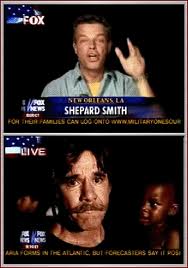 Personally, I have no doubt that what Bill, a veteran homicide detective from Manatee County Florida, witnessed was Mr. Brumfield’s demise. I began to wonder though how all “published reports” could be 24-48 hours off. I then located the article titled, “Rapes, killings hit Katrina refugees in New Orleans,” which I believe to be the first public mention ever of Danny Brumfield. Once again, going back to my experiences interviewing Katrina survivors. It took me months to figure out that due to the trauma, most of them had no concept of time. They knew what they experienced, but could not affirmatively tell you when it happened. And for some who had literally never been out of their neighborhoods, they did not even know where they were taken. It was when I began documenting the responders, who took photos, sent electronic messages, completed daily reports that I was able to figure out a firm timeline of events for the survivors. Back to the NOPD shooting at the convention center, there are a few more reasons why the Saturday morning date used in the NOPD report didn’t seem plausible to me:
Personally, I have no doubt that what Bill, a veteran homicide detective from Manatee County Florida, witnessed was Mr. Brumfield’s demise. I began to wonder though how all “published reports” could be 24-48 hours off. I then located the article titled, “Rapes, killings hit Katrina refugees in New Orleans,” which I believe to be the first public mention ever of Danny Brumfield. Once again, going back to my experiences interviewing Katrina survivors. It took me months to figure out that due to the trauma, most of them had no concept of time. They knew what they experienced, but could not affirmatively tell you when it happened. And for some who had literally never been out of their neighborhoods, they did not even know where they were taken. It was when I began documenting the responders, who took photos, sent electronic messages, completed daily reports that I was able to figure out a firm timeline of events for the survivors. Back to the NOPD shooting at the convention center, there are a few more reasons why the Saturday morning date used in the NOPD report didn’t seem plausible to me:
- The military marched on the convention center on Friday, bringing food, water and positioning snipers on rooftops. If the shooting happened that night, there would have been dozens of government eyes on it.
- The media descended on the convention center on Thursday 9/1, and Fox’s Shepard Smith and Geraldo Rivera were broadcasting live Friday evening. Geraldo had made arrangements for a RV. If he would have heard shots, cameras would have been rolling.
- Major Butch Shoop of the Texas Dept. of Wildlife and Parks told Bill Waldron on Thursday 9/1 “when he asked for volunteers to come help get me out of the Convention Center, NOPD supervisors told him that it was too dangerous because of the violence and people shooting at Police.” So whatever happened must have already happened before TDWP went into the convention center the afternoon of 9/1 to get Bill.
You may be asking why does it matter what day Mr. Brumfield was killed. For years I’ve been wandering what Chief Compass was talking about when he referred to the convention center being a dangerous and violent collection point when all other reports showed that it was probably the safest place to be. This is what I now believe happened. What Bill witnessed around 3:00 or 4:00 a.m. on 9/1 was Mr. Brumfield being run over by a NOPD patrol car, then being shot in the back by an officer on the passenger side. A third law enforcement officer then fired a shot over the crowd’s heads to keep them at bay, while they sped off down the boulevard towards the Harrah Casino command post. Somewhere in between that command post and the Hyatt Regency where Chief Compass was, the details of what happened right in front of Bill’s eyes were flipped. What Compass heard was that citizens were shooting at his officers.
The following is from a U.S. Justice Dept. press release:
“On December 9, 2011, a federal jury found former NOPD officer Ronald Mitchell guilty of committing perjury and obstructing justice for providing false and misleading information during a civil deposition in connection to a lawsuit filed by the family of Danny Brumfield.
According to the evidence presented at trial, Mitchell, while seated in the passenger’s seat of a patrol car, shot and killed Danny Brumfield on Convention Center Boulevard in New Orleans a few days after Hurricane Katrina.“
Here is where I’m going with this. The Superdome’s scheduled 9/1 evacuation was doomed after the MP was shot and FEMA evacuated. But according to Coach Blanco, buses were scheduled to roll to the convention center. That mission became doomed as well when the convention center was declared a “No Go Zone” by the NOPD leadership; unfortunately, as Nagin’s “SOS” plea for buses for the convention center was just hitting the wire services. If it were not for that big fat ‘non-truth’ that made its way up the NOPD chain of command, the NOPD leadership would not have taken the defensive stance that very well may have caused buses on their way to the convention center to be diverted. Nagin may never have sent out that specifically-worded “SOS” and the media would never have descended on the convention center when they did. The media breaking news blurbs would have been “we’re live at the convention center where “refugees” are being loaded on to buses to be taken out of the city.“ But instead, those buses that never showed were used to transport the military into position. It all made sense now. The final piece of a seven-year jigsaw puzzle.
Now, how do I confirm my theory of what was told to Chief Compass about the police encounter at the convention center? Contacting Compass was not an option for me. So, on the evening of the second Saturday in May ’12, I emailed Mayor Nagin again. To my surprise, two hours and twenty-five minutes later at 8:41 p.m., he responded back with the following:
“I don’t see how anyone in JP could have firest {sp} hand insight on what really happened in New Orleans. Don’t forget about the Gretna incident and them pumping their floodwater into the 17th street canal further flooding New Orleans. You should talk to someone like Chief Warren Riley to get a more accurate story. I could not put everything that happened in my book as Chief Compass is a friend. He did a good job but reach his limit, particularly after his friend committed suicide. My second book has more and should be released later this year.”
Because of the cooperation from the Katrina responders, I was able to amass a Katrina timeline like no other.
When referring to Compass’ Katrina experiences, the affect on him from the NOPD suicide(s) has been for years mentioned as the primary contributing factor. The only problem is that according to all “published reports” those two NOPD officers were found dead on Friday night 9.2.05, and Saturday 9.3.05; Days 5 and 6 of the disaster. Meaning, the tragic deaths of two of his men does not explain (to me) the origins of those Day 4 wild stories like:
“eighty-eight officers being beaten back by an angry mob at the convention center.“
However, what does seem to explain it is that Compass was not told the truth about the circumstances surrounding the shooting of Mr. Brumfield. At least this is what I’d like to think.
I kept the Gmail thread going and replied back to Nagin, immediately letting him know that I was not looking to shed any more bad light on his old friend Eddie Compass. On the contrary. I told him that I met Eddie at a Christmas party given by his in-laws, where we embraced and exchanged introductions. Yes indeed, I liked him right off the bat. After a wonderful dinner of some of the best food I have ever tasted, I went and sat down next to Eddie. He began talking about Nagin, Anderson Cooper and Douglas Brinkley. It had been only fifteen months since Katrina and emotions were still high for many. The only positive thing he had to say about someone was Spike Lee, director of When the Levees Broke: A Requiem in Four Acts. I saw where things were going so I jumped in to tell him I was working on a Katrina book. He then told me it would take one million dollars to get his story. This worked out fine for me. I had no money and I did not want to cause any problems for his wife who still worked for the City of New Orleans by letting him vent in writing. I would see Eddie and his family one more time at the following year’s Christmas party in ’07. We found some time to sit down and play a couple games of chess. He beat me twice like I stole something from him, lol! We all just had a good time. It was very easy to see why everybody loved Eddie.
Back to the thread, I went on to share my research findings with Nagin. I took him through the aforementioned eleven-point sequence of events on 9/1, which included the expanded version of sequence #3 and the convention center shooting. I also shared with him the affect that his 9/1 WWL-FM plea for help had on me. I told him what happened when I heard him say, “Get every doggone Greyhound bus line in the country and get their asses moving to New Orleans.” I was so traumatized by the whole thing; I thought he was telling me to get my ass moving to New Orleans. Six days later I was on a Continental Airlines 757 flying from Las Vegas McCarran International Airport to the Gulf Coast (IAH).
Honestly, I was amazed he was even communicating with me; even though I was one of the best at getting powerful people to share their Katrina experiences with me. I believe they all felt good about my objectivity, sincerity and thoroughness. On 2.9.12, I read the Times Picayune story titled “Ray Nagin is focus of federal grand jury probe.” What I would like to believe is that on that May ’12 evening I took his mind off of whatever was coming his way, if only for a couple hours. I pictured him chilling somewhere with cold libation in one hand and his Blackberry in another, going back in time with me to those surreal days of Katrina. I could tell he was impressed with all the hard work I had put into this project. As for answers to my many questions, he was not as forthcoming as I would have liked. Nevertheless, the great thing about my knowledge of Katrina was that whatever he said was useful data to me. I still had two more questions to run by him. Mayor Nagin confirmed my theory about Eddie Compass not receiving accurate intelligence from the field. Specifically, he was not told the truth about the early morning shooting at the convention center. Lastly, I wanted Nagin to confirm his recollection of Lt. General Honore walking through the Superdome crowds Wednesday evening (Day 3) to the Hyatt Regency to deliver a message to him, as the general wrote in his book Survival. Nagin’s response was:
“I do not recall Lt. General Honore walking thru Superdome to deliver any messages to me from Governor. Good luck with your book.”
That was it, my last-last interview. Or was I through with him?
I knew what he was saying by how he ended the message. Nagin was through communicating with me. But for some reason I felt I was not through with him. I fought the urge to extend our thread for two days, saying to myself “Don’t do it Darryl, don’t do it. You have what you need.” What did I do? I emailed him back. My tone was almost like: ‘you did a hell of a job that first week of Katrina’; ‘thank you for your help in my Katrina research’; an ‘in conclusion’; a benediction. Anyway, he had a one word reply, “Enough.” Such a powerful and definitive word coming from the man I credit with influencing me to drop everything, leave Las Vegas and join the Louisiana version of the Peace Corps. 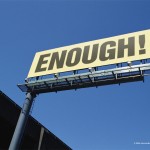 A man who I now credit for ending my 349-week odyssey. Enough. It was time for me to complete the epic story of the good fight; the story of the first week of Katrina; the story I call “CONTRAFLOW.” Although, I never did learn the origins of Coach Blanco’s 9/1 Westbank visit. I can only hope that one day former Louisiana Gov. Kathleen Blanco writes her own memoirs and answers that mystery. Yeah, guess I have done ENOUGH! …or have I?
A man who I now credit for ending my 349-week odyssey. Enough. It was time for me to complete the epic story of the good fight; the story of the first week of Katrina; the story I call “CONTRAFLOW.” Although, I never did learn the origins of Coach Blanco’s 9/1 Westbank visit. I can only hope that one day former Louisiana Gov. Kathleen Blanco writes her own memoirs and answers that mystery. Yeah, guess I have done ENOUGH! …or have I?
M. Darryl Woods, Lead Researcher
The Contraflow Project
Treme, Louisiana
7.7.12
Click the above play button or this link to hear a prayer from Pastor Sean Weaver of True Destiny Christian Church in Charlotte, NC.
CI’s
|
Funding
|
Make-a-
|
TCP
|
“The Events of 9/1” large print & printer friendly versions…
© All rights reserved, M. Darryl Woods

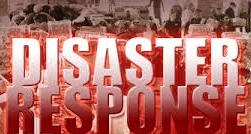

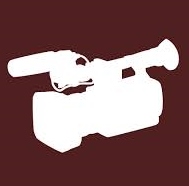
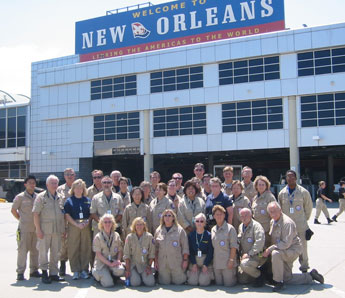
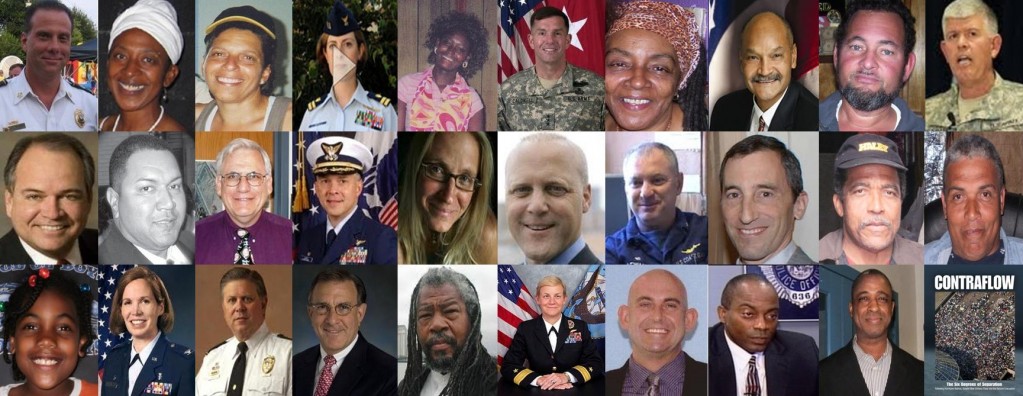
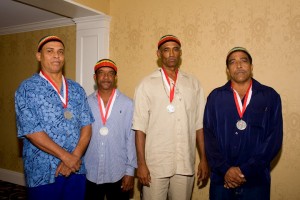
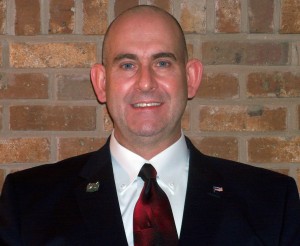
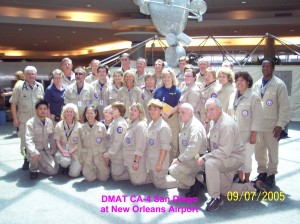
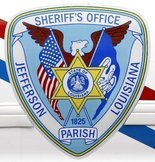




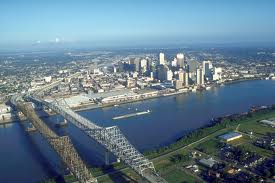
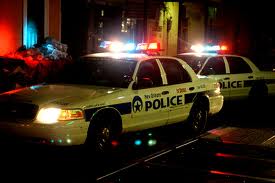
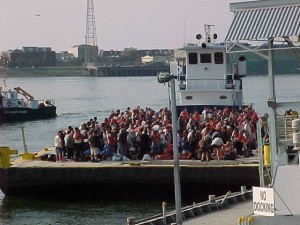




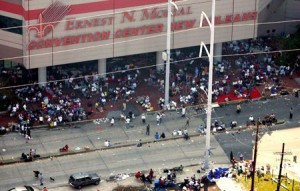
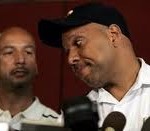
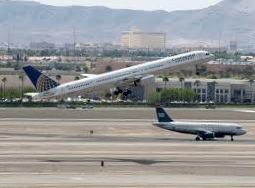



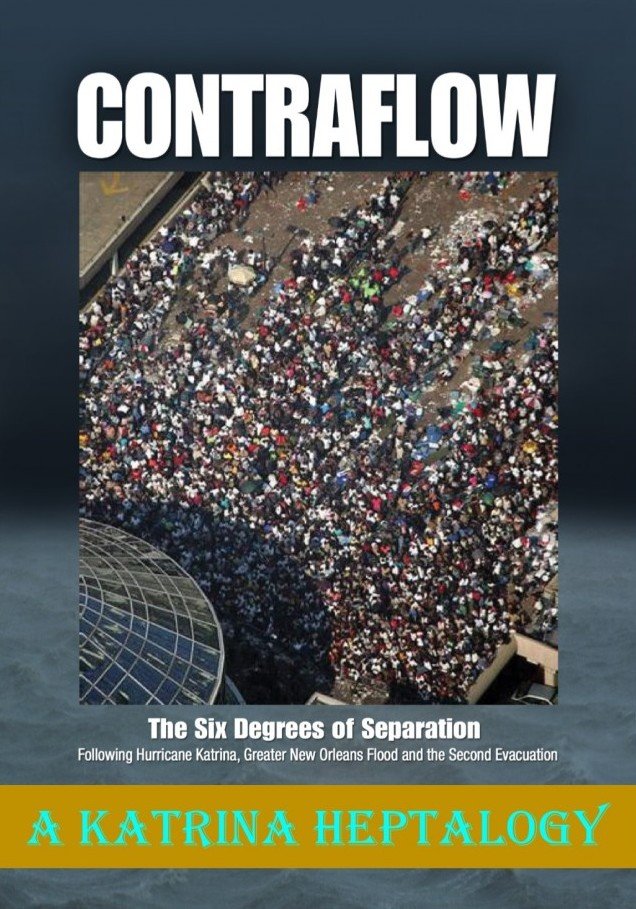






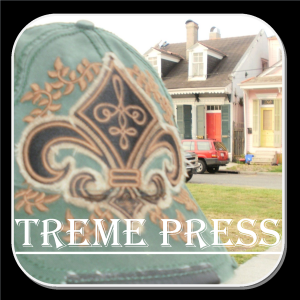
TCP Responses